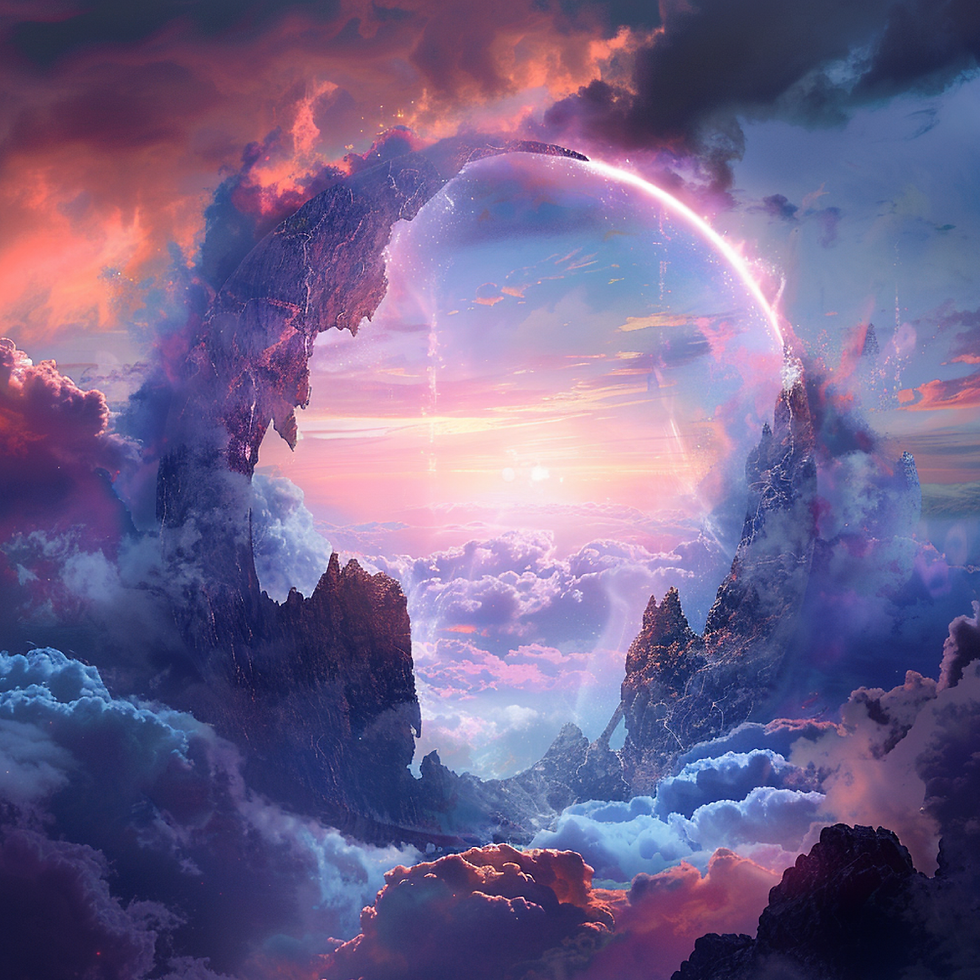GMing: Where to Start Part Three - Finding Inspiration
- Nina Wu

- May 19, 2024
- 3 min read
Welcome back to our series on becoming a confident and skilled Game Master (GM). In Part One, we covered the basics of rules and mechanics, and in Part Two, we explored the art of storytelling and world-building. Now, in Part Three, we’ll delve into where to find inspiration for your campaigns. Whether you’re a new or seasoned GM, these sources can spark your creativity and help you craft unforgettable adventures.

Drawing from Movies
Movies are a treasure trove of inspiration for GMs. From epic fantasy sagas to gritty sci-fi adventures, films can offer a wealth of ideas for plotlines, characters, and settings. Consider the pacing of your favourite films and how they build tension, develop characters, and resolve conflicts. For example, the intricate plotting of 'The Lord of the Rings' series can inspire epic quests and richly detailed worlds. Meanwhile, the character-driven stories in films like 'Star Wars' can help you create compelling NPCs with distinct personalities and arcs.
Tapping into Novels and Comics
Novels and comics are excellent resources for deep storytelling and world-building. Novels, especially in the fantasy and science fiction genres, often provide detailed descriptions of settings, cultures, and characters. Authors like J.R.R. Tolkien, Robin Hobb, and Raymond Feist offer rich tapestries of lore and world-building that can inspire your campaign settings and narratives.
Comics, with their visual storytelling, can also be a goldmine for GMs. The dynamic action sequences, unique characters, and imaginative worlds in series like 'The Sandman' or 'Saga' can help you visualise scenes and develop a more cinematic style in your games. Additionally, comics can teach you about pacing and how to balance action with story development.
Exploring Art and Music
Art and music can evoke emotions and set the tone for your campaigns. Fantasy art, in particular, can spark ideas for landscapes, creatures, and magical items. Websites like DeviantArt and ArtStation host thousands of artworks that can ignite your imagination. Look for pieces that resonate with the themes and moods you want to convey in your game.
Music can also be a powerful tool for inspiration. Create playlists that match the atmosphere of your campaign, from epic battle scores to serene ambient tracks. Composers like Howard Shore, Hans Zimmer, and Jeremy Soule (known for his work on the Elder Scrolls series) have produced scores that can transport you to different worlds and eras, providing a rich backdrop for your storytelling.

Utilising Maps and Geography
Maps are essential tools for world-building and can also be sources of inspiration. Studying real-world geography can help you create believable and diverse terrains for your campaigns. Historical maps, in particular, can provide insights into how cities, trade routes, and kingdoms are structured.
Fantasy map generators and resources, like those found on the website Donjon, or tools like Dungeon Alchemist, Wonderdraft, and Inkarnate, can help you create detailed maps for your game world. These maps can inspire new locations, adventure hooks, and travel encounters, making your world feel more expansive and real.

Engaging in Reading and Research
Beyond fiction, non-fiction books and historical research can offer valuable insights and ideas. Reading about ancient civilisations, mythologies, and historical events can provide a wealth of material for your campaigns. Historical conflicts, famous explorers, and legendary artefacts can all serve as inspiration for your game’s plot and lore.
Documentaries and educational YouTube channels can also be excellent resources. Documentaries on ancient cultures and historical periods can provide fascinating details that add depth to your world-building.
Drawing Inspiration from Online and Video Games
Online and video games are fantastic sources of inspiration for GMs. Games like 'The Witcher,' 'Elder Scrolls,' and 'Baldur's Gate 3' offer immersive worlds, complex storylines, and rich character development. Pay attention to how these games build their worlds, design their quests, and create engaging narratives. The interactive nature of video games can provide unique ideas for player agency and decision-making in your campaigns.
Massively Multiplayer Online Role-Playing Games (MMORPGs) like 'World of Warcraft' or 'Final Fantasy XIV' also showcase intricate world-building and community dynamics. Observe how these games handle large-scale events, lore, and character progression to incorporate similar elements into your tabletop RPG sessions.
Conclusion
Finding inspiration is a key part of being a successful GM. By drawing from a diverse range of sources, including movies, novels, comics, art, music, maps, historical research, and games you can create rich, engaging, and original content for your RPG campaigns. These sources not only spark your creativity but also help you develop a deeper, more immersive world for your players to explore.
In the next part of our series, we will explore practical tips for managing game sessions, handling player dynamics, and keeping the game running smoothly. Stay tuned for more insights and advice to further enhance your GMing skills.








Comments